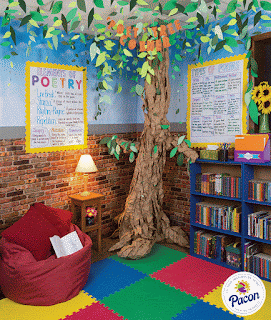HOW ARE STUDENTS GROUPED?
Before this lesson I wasn't aware of how many different ways students can be grouped. I also used to think that students in the same class had more or less the same level and did the same things at the same time.
In this lesson I have realized that there are different ways of grouping students or contents. We have learnt that there are two main ways to group students. The first one is the vertical perspective, where students are grouped by levels and stage. Inside this perspective, we find the graduated model, where they are grouped by age and levels and the individual work is promoted. On the other hand, we have the ungraduaded model where the particularities of each child are promoted.
We can also group children according to the horizontal perspective, where inside each level, students are grouped taking into account their specific particularities like: years of schooling, cognitive knowledge... Inside this perspective, students can be grouped forming homogeneous groups, which is quite impossible because no group is exactly homogeneous. On the other hand, we have the heterogeneous groups, where they are grouped using specific criteria.
The most difficult thing for me to learn was the concept of "corners" inside a class. This refers to different spaces inside the same class where students are doing different things.
I have been doing a research and I have found images that clearly explain a way of creating specific corners inside a classroom. Here I add the ones I have found more interesting and beautiful:
A READING CORNER: where children can go and read a book. I think that this corner will promote reading among students
A SCIENCE CORNER: this corner will give students the opportunity to see the practical aspects of the contents of science.
A CORNER FOR RESTING: this corner will let students rest between each class.
A MATHS CORNER: this corner will promote students to play and discover that Maths can also be fun.
I think that the way students are grouped and how the different spaces of the class are decorated and distributed directly affects the way students will learn and how good it would be their personal motivation to the subject.
My point of view is completely related whit the opinion of Kimb, Chun, Leen and Shon (2016) who say that "For effective cooperative learning organize group is important. Member in the group to the interaction between the group members are to be composed of heterogeneous. However, the average ability of the group needed to solve a given task to a fair evaluation in cooperative learning should be similar to each other between the groups. In this paper, we propose greedy approach to find partitions with high homogeneity in a group and high heterogeneity between groups."
Referencies:
- Kim B.W., Chun S.K., Lee W.G., Shon J.G. (2016) The Greedy Approach to Group Students for Cooperative Learning. In: Park J., Yi G., Jeong YS., Shen H. (eds) Advances in Parallel and Distributed Computing and Ubiquitous Services. Lecture Notes in Electrical Engineering, vol 368. Springer, Singapore
I hope you've enjoyed it!




Comentarios
Publicar un comentario